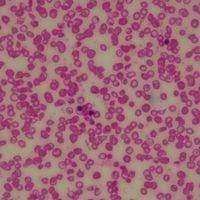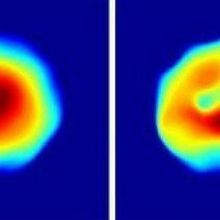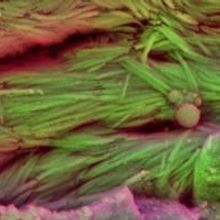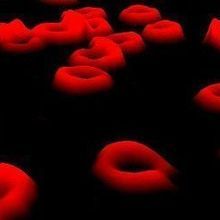Login
Subscribered blood cells

Red Blood Cells Activate Innate Immune System
Abby Olena, PhD | Oct 20, 2021 | 4 min read
Researchers link the ability of the cells to bind and present DNA from pathogens and cell death to anemia, which is common in COVID-19, and immune activation.

New Protocol Advances Toward Lab-Made Universal Red Blood Cells
Diana Kwon | Dec 17, 2020 | 4 min read
Researchers report a new way of generating the cells from induced pluripotent stem cells in hopes they will one day be used in blood transfusions.

Malaria Parasites’ Biological Clocks Coordinate Cell Destruction
Abby Olena, PhD | May 14, 2020 | 3 min read
Two studies show that Plasmodium—the genus of protozoans that cause malaria—have an internal sense of time that synchronizes with their host’s circadian rhythms and allows the parasites to collectively attack blood cells.

Early Results Are Positive for Experimental CRISPR Therapies
Jef Akst | Nov 19, 2019 | 2 min read
Two clinical trial participants—one with β-thalassemia and one with sickle cell disease—appeared to benefit from the gene-editing treatments with minimal side effects, according to the companies.

Charting Crescents, 1910
Sukanya Charuchandra | Oct 1, 2018 | 3 min read
James Herrick, a Chicago doctor, was the first to describe sickled red blood cells in a patient of African descent.

How Red Blood Cells Get Their Dimples
Ashley Yeager | Sep 1, 2018 | 3 min read
Myosin proteins tug on the cell membrane, giving an erythrocyte its distinct shape.

Infographic: Red Blood Cell Shape
Ashley Yeager | Sep 1, 2018 | 1 min read
What happens when myosin inside red blood cells can't do its job?

Image of the Day: Malaria Hologram
The Scientist and The Scientist Staff | Nov 5, 2017 | 1 min read
Optical engineers have developed a portable field microscope that could aid the diagnosis of diseased cells.

Image of the Day: Bygone Blood Cells
The Scientist | Apr 10, 2017 | 1 min read
These fossilized red blood cells (right), found in an ancient, blood-engorged Amblyomma tick (left), likely belonged to primates.

Antimalarial Drug Mechanism Explained
Karen Zusi | Dec 29, 2015 | 2 min read
Artemisinin targets multiple parasite proteins after being activated by the iron in heme cofactors.

Blood Cell Development Reimagined
Bob Grant | Nov 9, 2015 | 2 min read
A new study is rewriting 50 years of biological dogma by suggesting that mature blood cells develop much more rapidly from stem cells than previously thought.

Soft Tissue Detected in Millennia-Old Dino Bones
Bob Grant | Jun 9, 2015 | 2 min read
Researchers report finding evidence of red blood cells and proteins in 75-million-year-old dinosaur fossils.

Next Generation: Precision Blood Rinsing
Molly Sharlach | Nov 25, 2014 | 3 min read
A microfluidic device can safely remove glycerol from thawed red blood cells in minutes, potentially making frozen blood more feasible for routine transfusions.
Microparticles Deliver Oxygen
Bob Grant | Jun 29, 2012 | 2 min read
Researchers have developed fast-dissolving particles that may one day prevent organ damage or death by instantly infusing oxygen into the blood.
Self-Harm for Self-Defense
Hayley Dunning | Jun 20, 2012 | 3 min read
To protect themselves during malaria infections, mice can kill their own healthy red blood cells, cutting off the parasite’s primary resource.
Opinion: Misleading Drug Trials
Daniel W. Coyne | May 14, 2012 | 5 min read
Amgen’s incomplete report on an early major trial of epoetin misled the medical community about the anemia drug’s risks and benefits—and helped make Amgen rich.
